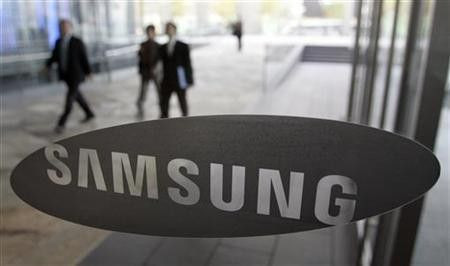Samsung Galaxy S7 And Galaxy Note 6: Possible 'Futuristic Display Features' Revealed

With the Galaxy S6 and Galaxy S6 Edge, Samsung has proved to the world that the company can adjust the sails according to the flow of the wind by opting for a 360 degree design change and the innovative side displays. However, now, the latest news is that, Samsung is extremely serious about “flexible and transparent displays” in its upcoming devices like the rumoured Samsung Galaxy S7 (2016 flagship) and the Samsung Galaxy Note 6 (2016 phablet).
According to Business Korea, Samsung and LG are reportedly working on a slew of display technologies targeting future phones and tablets. In addition, the tech giants are apparently creating a variety of screens/displays that could possibly be used in home appliances, PCs and mobile gadgets. These new displays include “transparent screens” and “flexible displays that can be folded and released back to original shape.” Adding a cherry on top, such a device with cutting-edge technology will be released soon i.e. sometime in 2016. Meanwhile, BGR opines that, such killer features could be included in the Samsung Galaxy S7 and the Samsung Galaxy Note 6.
Apparently, a Samsung official told Business Korea that, “The industry believes that the commercialization of foldable smartphones will be possible in 2016.” In any case, people are aware that, Samsung has been investing time and money in curved and foldable displays for its smartphones and the company reportedly makes its presence felt in every trade show with innovative products ranging from mobile devices, wearable gadgets to TV sets. But then, the same publication also says, this technology will not be limited to gadgets, instead, it will be spread out to the entire IT industry spectrum, including laptops and monitors.
Speaking of transparent displays, Business Korea writes, “Transparent displays can create a picture that you can see when looking through glass. Currently, this technology is partially used in commercial aircraft, fighter planes, and billboards.” “They are also being used for heads-up displays that present vehicle driving information on the glass in front of a driver in luxury sedans built by Hyundai Motor, Mercedes-Benz, and BMW,” the publication added further.
On the other hand, there were reportedly several failures in the past with the transparent display application and marketing. Apparently, this display technology was used in refrigerators. This means, the transparent refrigerators reportedly allowed customers to “see inside and look at advertisements at the same time.” However, that device turned out to be a commercial failure because of less traction from the target audience. In any case, the publication notes that such a display in refrigerators might make a comeback in future. Readers can click the Business Korea link mentioned above to check out the image of a futuristic transparent display panel.
To report problems or to leave feedback about this article, e-mail: p.rathinavel@ibtimes.com.au.





















